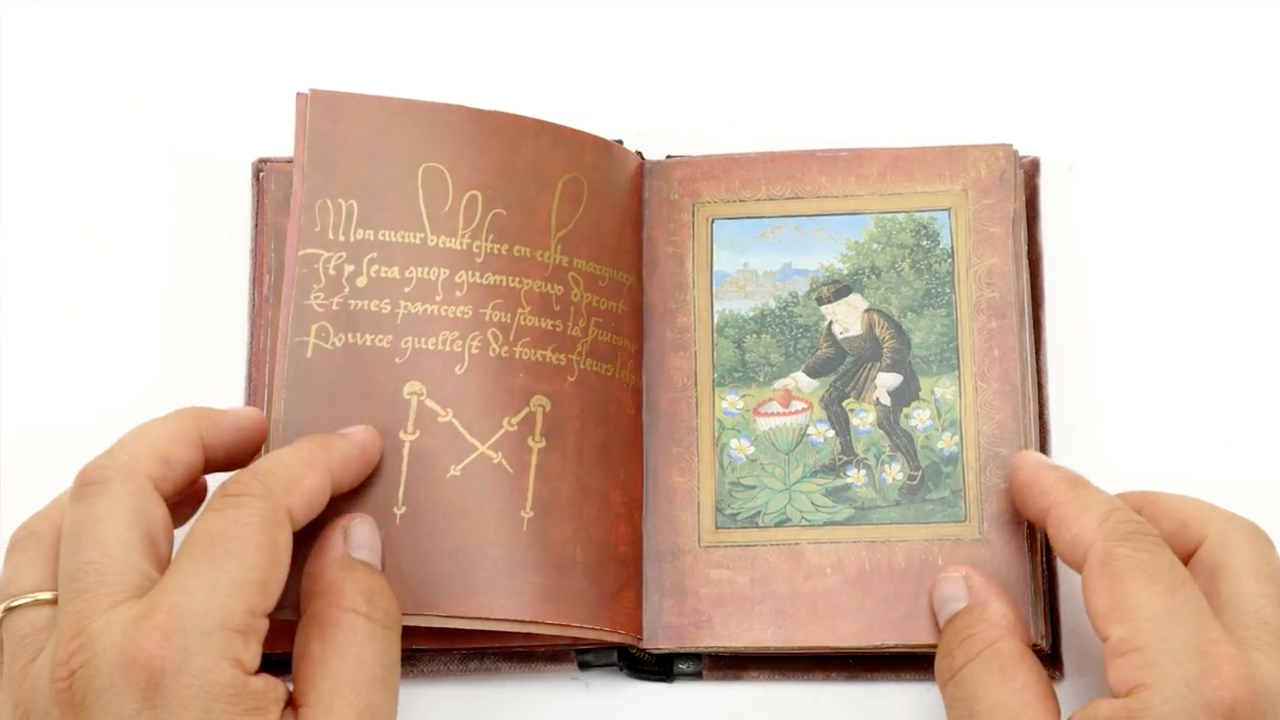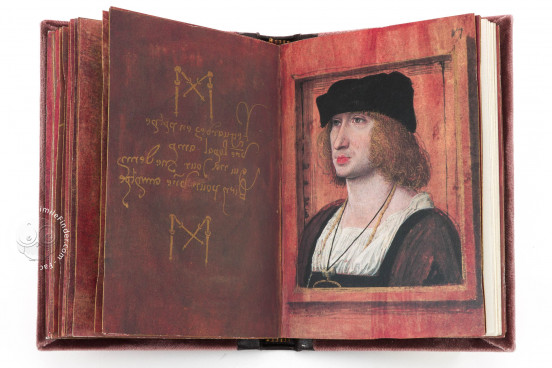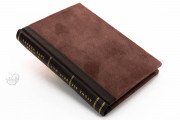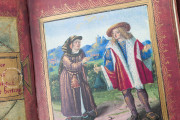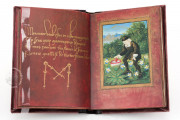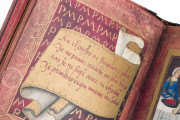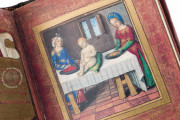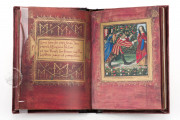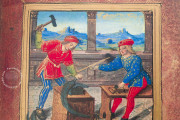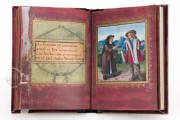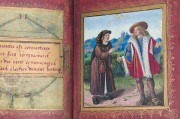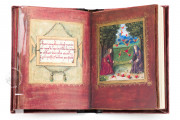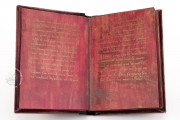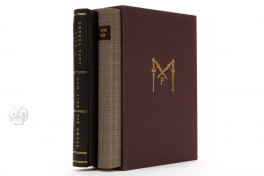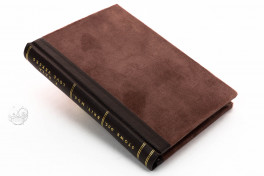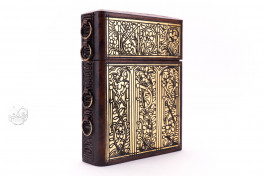The diminutive book called the Little Book of Love is a collection of twelve quatrains in French written in the early years of the sixteenth century. It was commissioned by and perhaps in part made by Pierre Sala, a courtier of Louis XII of France. Every one of its twenty parchment folios is dyed a rich purple in the fashion of ancient manuscripts. The dedication prose is written in an early Humanist cursive in glimmering gold ink.
Most of the twelve poems of endearment are presented within trompe l'oeil placards on cushions decorated with Ps and Ms for Pierre and its intended recipient, Marguerite Bullioud, his perhaps mistress and eventual wife. Opposite the verses are delicate illuminations framed in gold by the Master of the Chronique scaldaleuse save for the portrait of Pierre Sala, which was painted by Jean Perréal, a court portraitist and friend of Sala. It is bound in velvet with a decorated carrying case.
Late Medieval Courtly Love
The development of Romantic literature through the Middle Ages is often referred to as "courtly love" due to its initial popularity with the nobility, especially in dramatic tales about King Arthur, Charlemagne, and various saints. Loving a noble lady from afar was considered the highest form of spiritual affection.
The Little Book of Love captures perfectly this ideal with its sweet aphorisms and verses paired with charming, jewel-like illustrations and ending with a personal portrait of the enamored beau made all the more splendid for its glimmering gold and regal purple pages.
A Personal Manuscript
While all manuscripts are, by their nature, individual creations, most are copies of spiritual or literary texts. Pierre Sala's Little Book of Love, however, was always intended as a unique work matching collected verses and idioms with commissioned artwork within a miniature book to be a gift for a beloved.
It is a development from the popular books for personal devotion such a Psalters and Books of Hours, but decouples deluxe manuscript production from religious content and use. Instead, it is designed to be delightful and entertaining with its emotional and visual amusement.
A Little Book in Big Collections
As a personal manuscript, the Little Book of Love remains in excellent condition with very little wear to its delicate illuminations. It was handed down through the Sala family until it came to be owned in the eighteenth century by Jean-Andoche Junot, 1st duke of Abrantès, as attested by a sales receipt. This was likely when the seventeen sheets of paper with a full transcription of the text in French were added.
It then entered the collection of Richard Grenville as part of the Stowe House collection and was eventually sold to Bertram Ashburnham. It was purchased as part of the Stowe manuscripts by the British Museum in 1883.
Binding description
Binding
The majority of the binding is original to the early sixteenth century. The pale brown velvet covers are slightly different, either from intent or damage. The leather spine was repaired after entering the custody of the British Museum. It is contained with its original carrying case made from tooled leather over a wooden core. Vegetal motifs are combined with the lovers' initials of P and M. Each side is banded with four metal rings made to secure it to straps for a belt or saddle.
We have 2 facsimiles of the manuscript "Pierre Sala's Little Book of Love":
- Pierre Salas "Le Petit Livre d'Amour" (Standard Edition) facsimile edition published by Faksimile Verlag, 1994
- Pierre Salas "Le Petit Livre d'Amour" (Deluxe Edition) facsimile edition published by Faksimile Verlag, 1994

